Imagine having no blood, no heart, and no brain yet somehow managing to survive and evolve over five hundred million years. Humans wouldn’t be able to function without ONE of those vital organs, let alone surviving without having ALL of them.
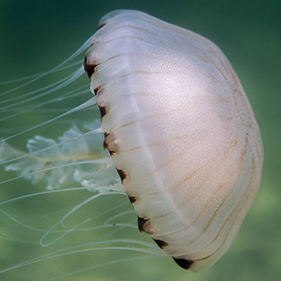
Common name: Jellyfish
Scientific name: Medusozoa
Type: Invertebrate
Phylum: Cnidaria
Average Size Relative to a Diver:

Jellyfish have existed since before dinosaurs walked the earth. As the name implies, jellyfish literally look and feel like jelly. These simplistic invertebrates are composed of up to 95% water and often have a transparent or translucent body.
Jellyfish are part of the phylum Cnidaria, which encompasses over 10,000 species of animals exclusively found in aquatic environments. The most recognized trait animals in the Cnidarian phylum have is their ability to sting through specialized cells. A few other Cnidarian cousins to the jellyfish are animals like; anemones, hydroids, and corals.

From the warm sunny waters of the ocean surface to the deep dark sea, different species of jellyfish can be found in every corner of the world. And they aren’t all marine. Some types of jellyfish have even evolved to populate bodies of fresh water like lakes and rivers.
Take a look at the map below to see where they are typically found:

On top of being found in every ocean of the world, jellyfish also come in a variety of shapes, sizes, and colors.
One of the biggest species of jellyfish is called the Lion’s Mane jelly (Cyanea capillata). The Lion’s Mane can have a bell measuring close to 1.8 meters (6 feet) in diameter as well as tentacles and oral arms trailing behind it up to 15 meters (49 feet) in length. Yikes!
While the Lion’s Mane jelly is one of the largest and longest species of jellyfish on the planet, you’d be lucky if you didn’t need a microscope to see the smallest. The Creeping Jelly is considered the tiniest recorded jellyfish species. The Creeping Jelly (from the genera Staurocladia and Eleutheria) has a minuscule bell diameter measuring only 0.5 millimeters across and tentacles that are not much longer.
A jellyfish is made up of three main parts; a bell, oral arms, and tentacles.
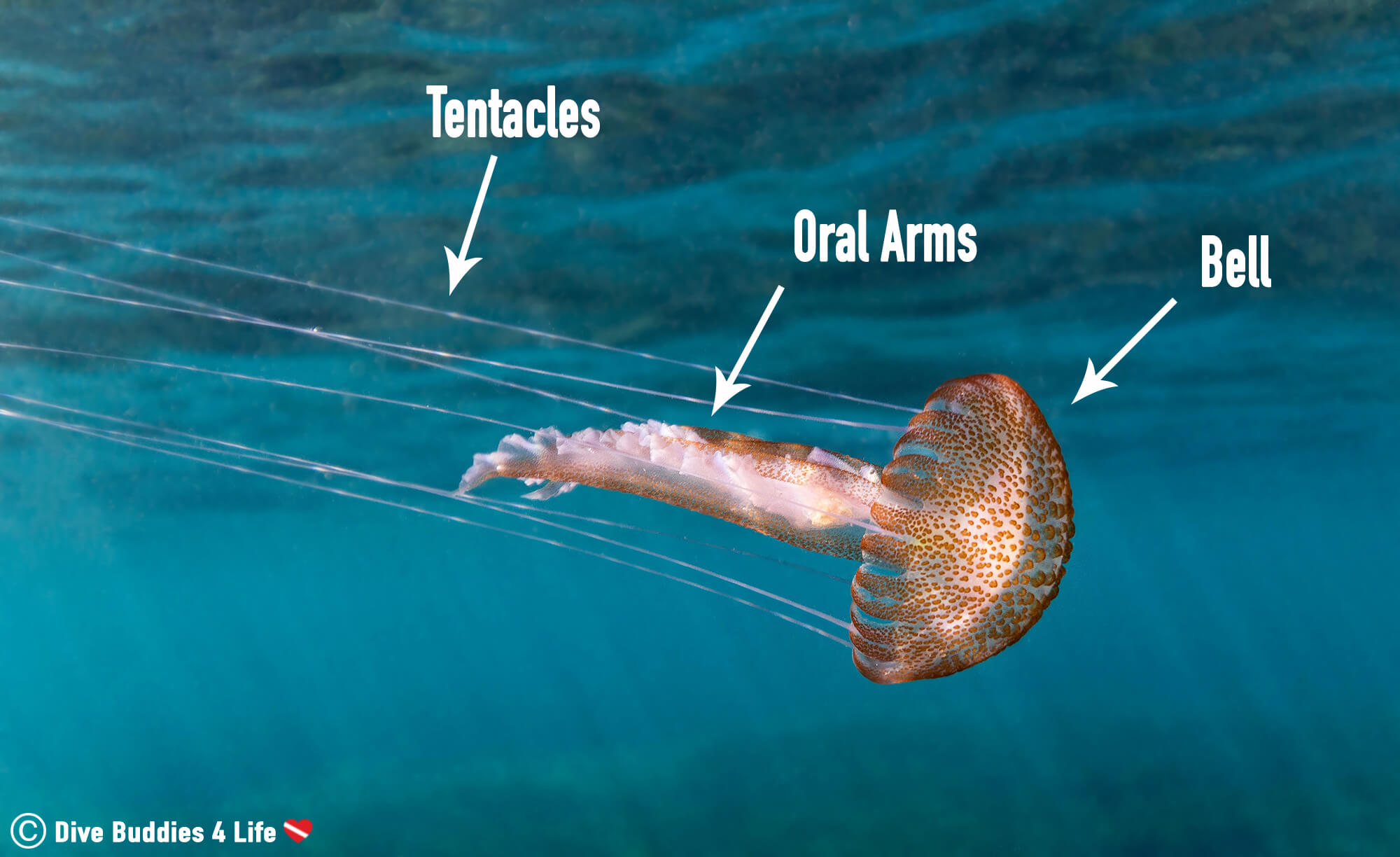
The bell (also called hood) is the primary body portion which often looks like an umbrella. This hood houses all the jellyfish’s simplistic organs including a nerve net (which is a basic version of our brain and nervous system), gut (the digestive-excretory system), circulatory system and osmoregulatory system (used to absorb and filter water in and out of the jellyfish’s body).
The oral arms connect to the main body stalk, encircling the gut in the center of the jellyfish. They help form the opening to the oral cavity where food is consumed and excreted. In case you haven’t figured it out, yes it does mean a jellyfish eats and poops from the same hole. The tentacles are the stringy spaghetti-like filaments that trail behind the jellyfish and catch its prey.
It is sometimes difficult to differentiate between the oral arms and tentacles and most people think they are one in the same. The biggest thing to remember is even though both appendages have the potential to sting; the oral arms encircle to the mouth/anus of the jellyfish, while the tentacles are thinner and form the outer part around the bell.
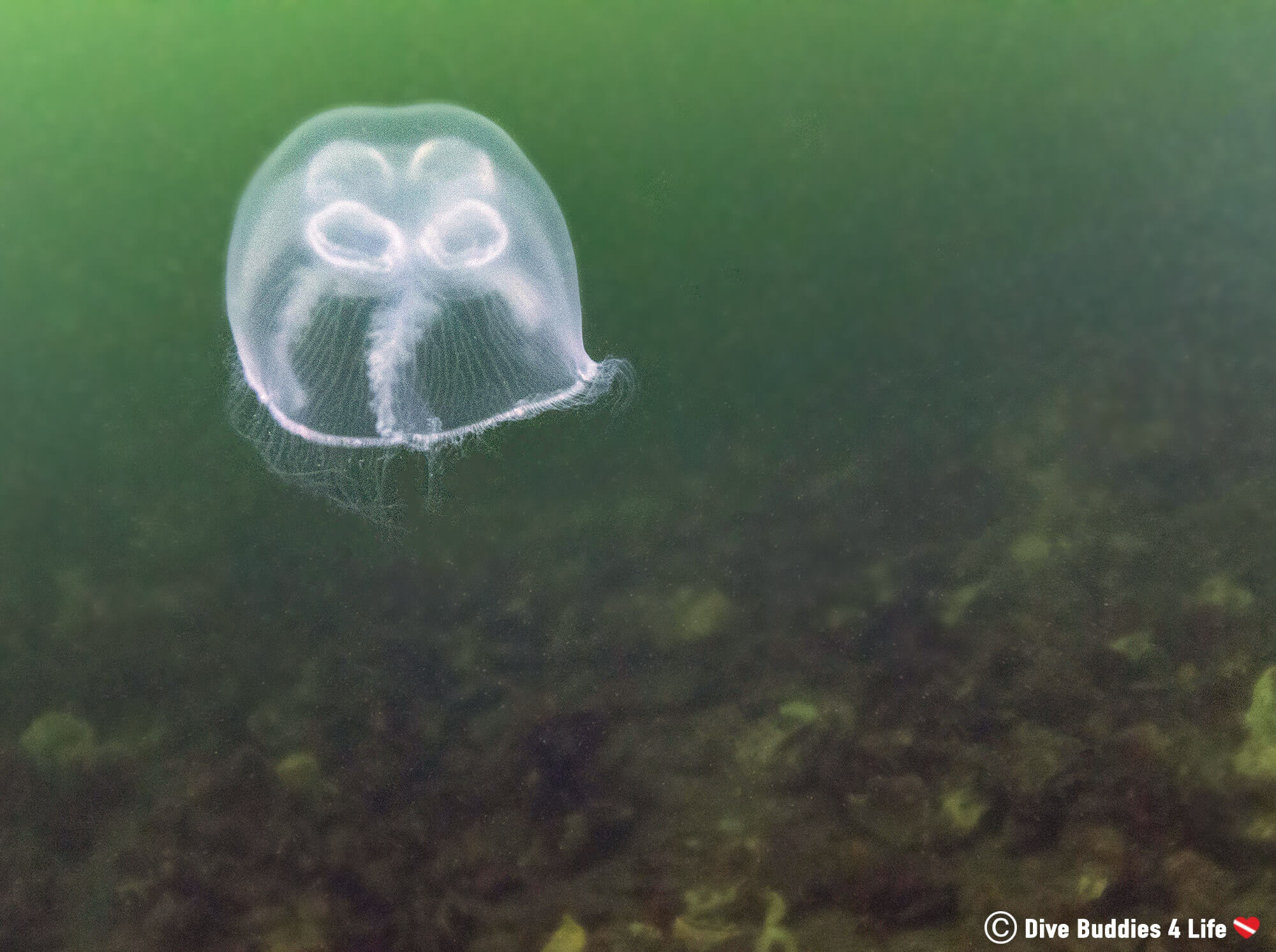
As lifeless as jellyfish may seem in the water, floating along at the mercy of ocean currents, these animals do have a sense of directionality and the ability to propel themselves.
Specialized eyes located around the outer edge of their bells enable jellyfish to sense their environment and navigate up, down and around obstacles. While not as specialized as human eyes, these light-sensing organs see light and dark shadows, and in a box jellyfish, can even go as far as seeing color.
In addition to their eyespots, jellyfish can move throughout the water column by using a combination of muscle and osmoregulation. They radially expand and contract their bodies expelling jets of water behind them to move forward. Jellyfish are so good at propelling themselves around that they are considered one of the most energy efficient swimmers in the animal kingdom.
Jellyfish are passive animals do not purposely try to harm humans.
They do, however, possess specialized cells found in their oral arms and tentacles that can sting. These stinging cells are called nematocysts, and they are triggered to sting upon contact.
The potency of the jellyfish sting is entirely species-dependent. Different types of jellies have different lengths of nematocysts as well as different venom toxicity. Stings from species such as moon jellies and nettles could range from a dull tingle to a small rash, whereas brushing up against a highly dangerous box jellyfish could leave you in severe pain and potentially even result in death.
It’s not by choice that jellyfish sting us, their tentacles simply have pressure-sensitive cells that are wired to sting upon contact.
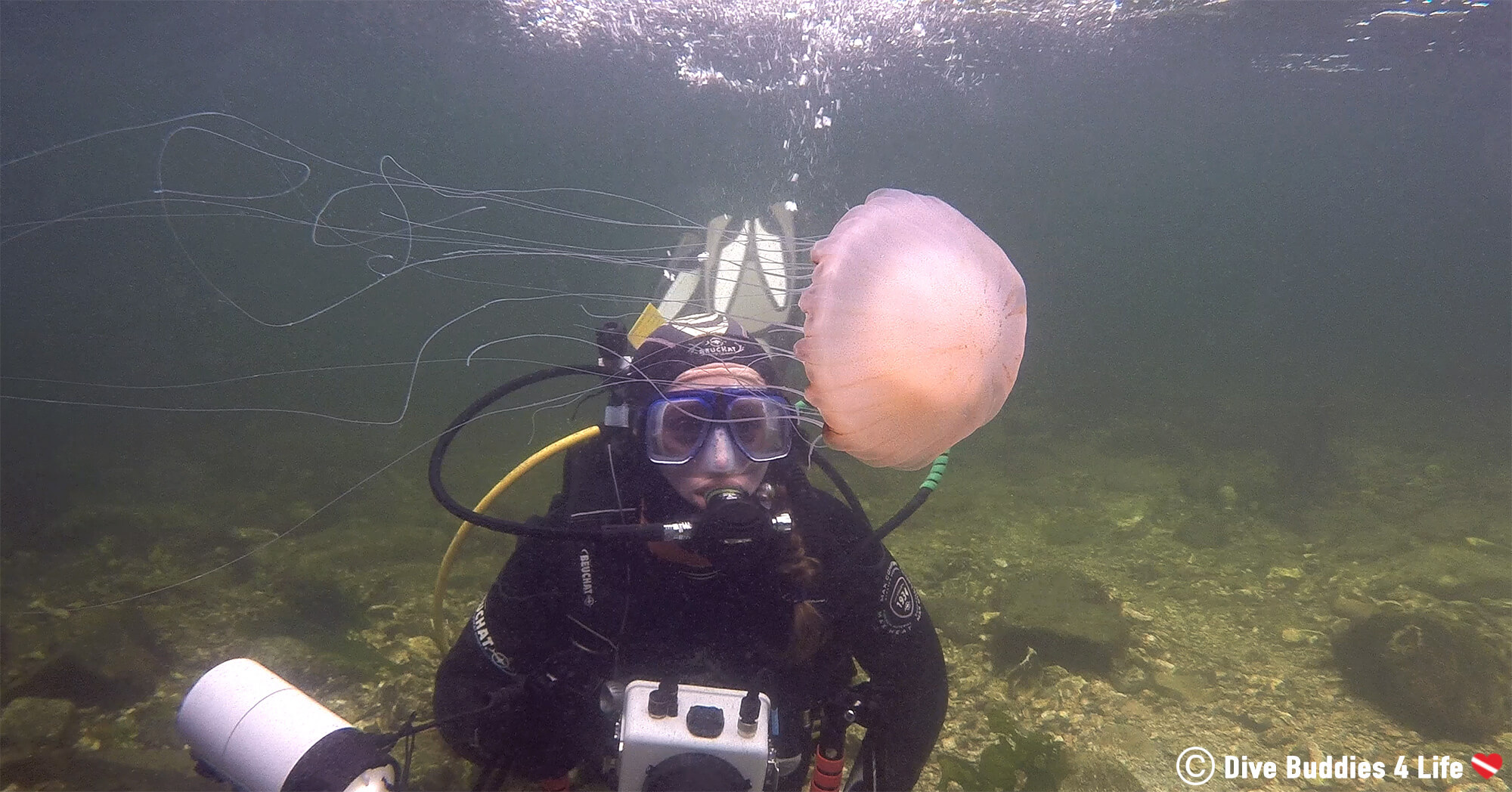
The best way to avoid dealing with jellyfish and the nasty stinging punch they pack is to pay attention and familiarize yourself with the beach you are swimming at. Listen to the news, talk to locals and pay attention to warning signs often posted at beach entrances. These signs are excellent indicators of any hazards in the area. Also, keep in mind that jellyfish tend to move to coastal regions as the water temperature heats up.
Large pelagic fish and sea turtles are few and far between. The planet is slowly heating up thanks to climate change. Pollution is creating all sorts of inhospitable “dead zones” in the oceans. The aquatic environment is changing drastically setting the stage for the rise of the jelly.
While jellyfish blooms have come and gone in the past, within the last eight years, huge unprecedented blooms have been popping up. Large expanses of coastlines and beaches have been closed in the Mediterranean Sea, the Black Sea, the Gulf of Mexico, and the Yellow and Japan Seas. Nuclear power plants in Scotland, Israel, and Florida have been forced to shut down because of nuisance jellyfish clogging up the water inlets.
The jellyfish is thriving and we are helping it.
With climate change, comes the rise in ocean temperatures which encourages jellyfish reproduction. Because of overfishing, we have caused a shift in the marine food chain and with that, jellyfish predators are less numerous than they use to be.
Jellyfish are adaptable and well equipped to survive much of what the world throws at them. They can survive in conditions with little to no food for months, they can live in oxygen sparse water. They even seem to succeed in all sorts of polluted and fouled conditions.
Will jellyfish be the next kings of the sea? Well, they’re not exactly fun to swim with but the future does look blooming for these spineless animals.
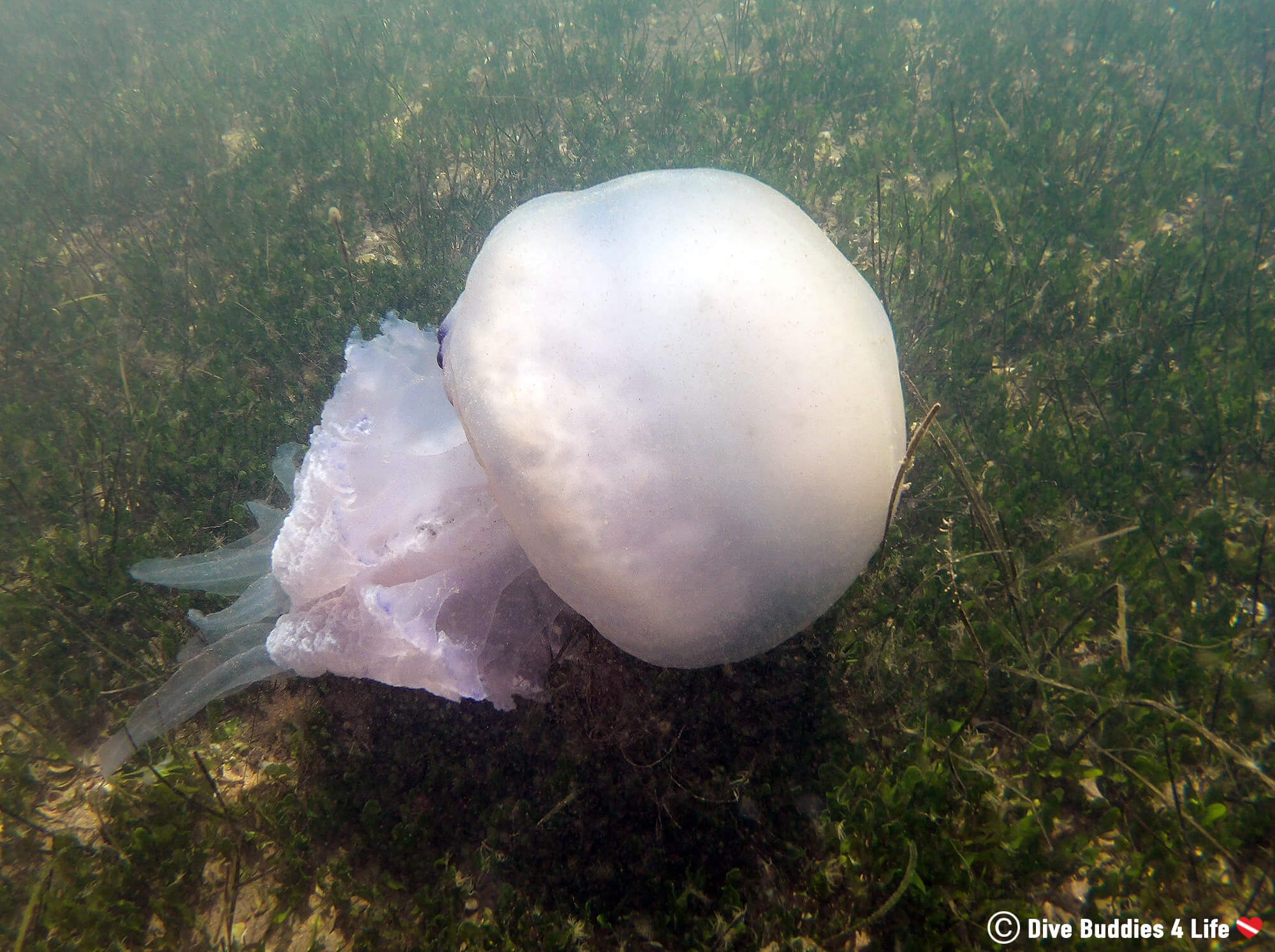
Writers Note: Thank you to the one and only Eric Ng, an aquarist from Ripley’s Aquarium of Canada, for reading over this post and offering improvements and suggestions. Your knowledge and love of all things jellyfish is one-of-a-kind. You truly are the Jelly King!


The Xtar UltraPointer DL2 1600 scuba diving light is the kind of gear that doesn’t just light your way—it enhances the entire dive.

The Great Lakes are inland seas offering the historical allure of submerged shipwrecks, the ecological diversity of fish species, and the serene beauty of underwater landscapes. Not only are they a bucket-list destination for divers but they are also a place that leaves a lasting impression.

Alberta's Rocky Mountains are a place in Canada that captivate adventurers with breathtaking peaks but also scuba divers with glacial lakes.

A step by step how-to guide about researching, planning and executing your next scuba diving trip.

Greece is a haven for adventure seekers and scuba divers alike. Here are three wondrous spots for travellers to explore beneath the waves in this watery European destination.

Have you ever heard of crabs that hitchhike through the seas on the back of whales? Or that fish bathe in freshwater springs gushing out in bottom of the sea? All About Fish and Fellows is a compilation of stories put together by writer Tim Schröder presenting some of the most fascinating facets of current marine research.

West Hawk Lake is one of the best - and most interesting - scuba diving sites in Manitoba. The lake was formed by a meteorite impact 150 million years ago and the crater filled with melting glacier water.

The ASIWO Manta Sea Scooter is an affordable and innovative scooter designed to let swimmers and snorkelers explore the sea to their hearts content.

A scuba diving gear review of the features found in the Tidal Mask by Tidal Sports and ProShot.

Join the dive quest to save Cuba's Gardens of the Queen with divemaster AJ Bailey in Nicholas Harvey's second scuba novel.
